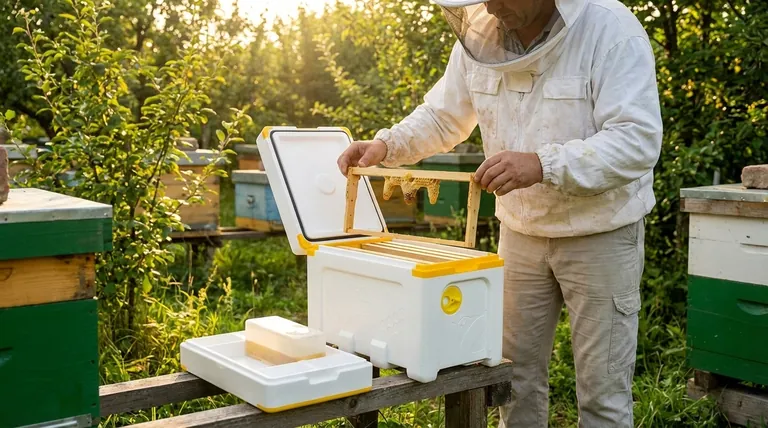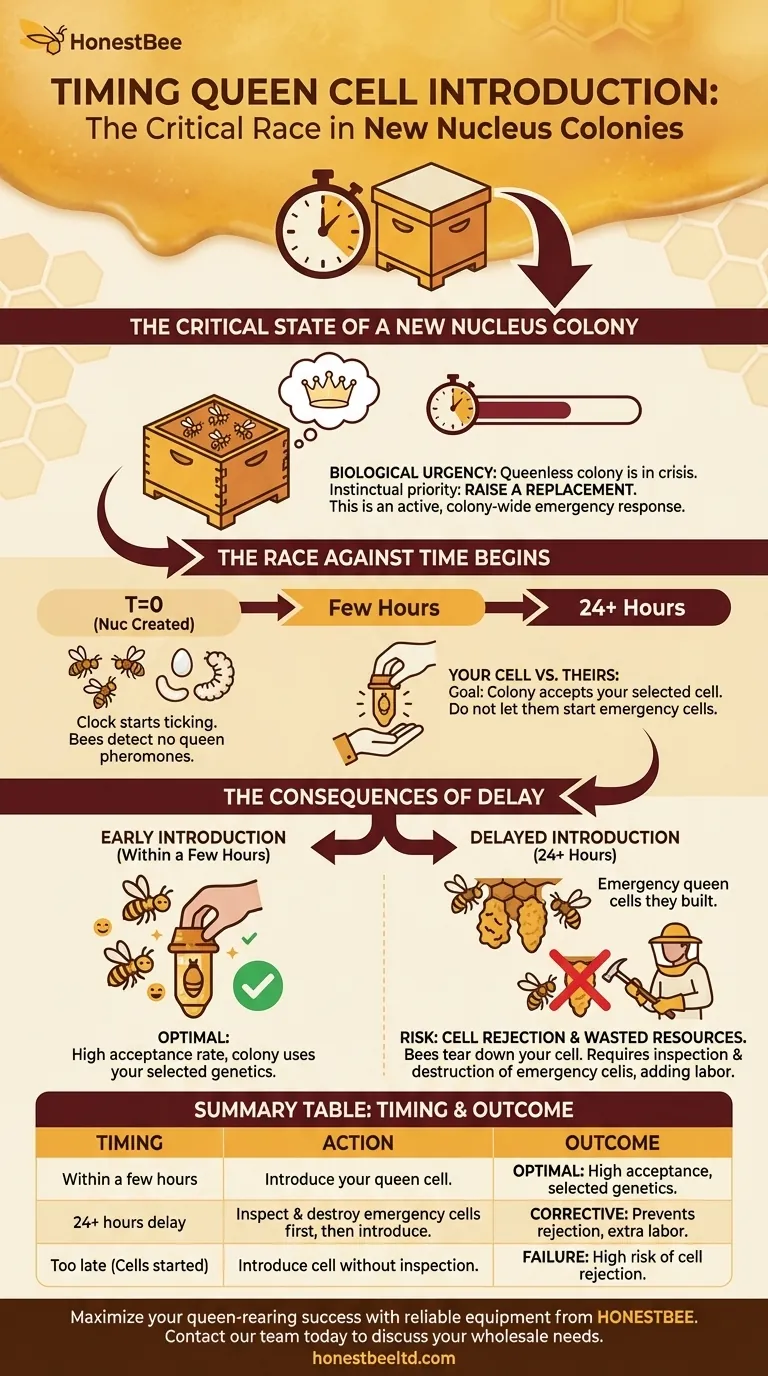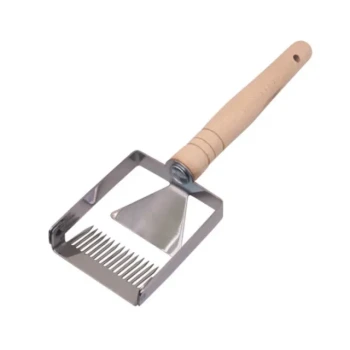For successful queen rearing, you must introduce queen cells into your nucleus colonies as soon as possible after you have set them up. Allowing too much time to pass triggers the colony's natural emergency response, causing them to start raising their own queen, which puts your introduced cell at high risk of being rejected and destroyed.
A newly created nucleus colony is in a state of biological urgency. Your goal is to satisfy its need for a queen with your selected cell before the colony takes matters into its own hands.

The Critical State of a New Nucleus Colony
When you create a nucleus colony, or "nuc," for mating purposes, you are intentionally making a small colony queenless. Understanding their reaction to this state is the key to timing your introduction of a queen cell.
The Biological Imperative
A honey bee colony's survival depends on its queen. A queenless colony is in crisis and its immediate, instinctual priority is to raise a replacement. This is not a passive wait; it is an active, colony-wide emergency response.
The Race Against Time Begins
From the moment you create the nuc, a clock starts ticking. The worker bees will quickly recognize the absence of the queen's pheromones. If they have access to eggs or larvae less than three days old, they will begin the process of creating "emergency" queen cells.
Your Cell vs. Theirs
Your goal is to have the colony accept and care for the high-quality, genetically selected queen cell you are providing. If they have already started their own emergency cells, they will view your introduced cell as a rival to be eliminated.
The Consequences of Delay
Timing is not a suggestion; it is a critical factor for success. Waiting too long directly jeopardizes your queen-rearing efforts.
The Primary Risk: Cell Rejection
If a nuc has already started building its own queen cells, it is far less likely to accept a foreign one. The bees will often tear down the introduced cell, destroying the queen pupa inside.
Wasted Colony Resources
Building queen cells and raising a queen is resource-intensive. If the colony invests energy in creating emergency cells that you later have to destroy, it is a waste of resources that could have been directed toward caring for your intended queen and building up the nuc.
The Need for Corrective Action
If you are delayed, you cannot simply add your cell. You must first perform a thorough inspection of every frame in the nuc, find, and destroy any and all emergency cells the bees have started. This adds labor and time to your operation. Introducing a cell without this step is setting it up for failure.
Making the Right Choice for Your Goal
Your timing strategy should be based on maximizing acceptance and minimizing extra work.
- If your primary focus is maximum success and efficiency: Introduce the queen cell within a few hours of creating the nucleus colony.
- If you are unavoidably delayed by 24 hours or more: You must inspect every frame for emergency cells and destroy them completely before introducing your new cell.
By understanding the colony's urgent need, you can work with their biology, not against it, to ensure your new queens are accepted.
Summary Table:
| Timing | Action | Outcome |
|---|---|---|
| Within a few hours | Introduce your queen cell. | Optimal: High acceptance rate, colony uses your selected genetics. |
| 24+ hours delay | Inspect & destroy all emergency queen cells first, then introduce your cell. | Corrective: Prevents rejection but requires extra labor. |
| Too late (Colony has started cells) | Introduce cell without inspection. | Failure: High risk of cell rejection and destruction. |
Maximize your queen-rearing success with reliable equipment from HONESTBEE.
We supply commercial apiaries and beekeeping equipment distributors with the high-quality, wholesale-focused supplies needed for efficient nucleus colony management. From nuc boxes to protective gear, our products are designed to support your operation's scale and success.
Contact our team today to discuss your wholesale needs and ensure your colonies get the best start.
Visual Guide

Related Products
- Automatic Heat Preservation 6 Frame Pro Nuc Box for Honey Bee Queen Mating
- 4 Frame Plastic Nuc Boxes for Beekeeping Bee Nuc Box
- 5 Frame Langstroth Poly Nuc Corrugated Plastic Nuc Boxes
- HONESTBEE Professional Long Handled Hive Tool with Precision Cutting Blade
- Professional Insulated Plastic Bee Hives
People Also Ask
- What happens if a nuc is left queenless? Prevent Swarming and Colony Collapse
- What are the advantages of purchasing a nuc over a package of bees? A Head Start for New Beekeepers
- What is the method for making several smaller nuclei from a single colony? Accelerate Apiary Growth with the Split Technique
- How can double nucs be expanded for additional frames? A Guide to Vertical Growth
- What are the two types of nucs? Choose the Right Nuc for Your Beekeeping Goals



















